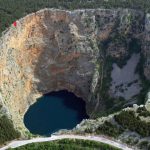As Morski writes on the 8th of January, 2019, at the end of last year, the Apoxyomenos Museum on Mali Lošinj was nominated for the title of the European Museum of the Year among as many as 39 other European museums, from Russia to the United Kingdom. Otherwise, this popular Mali Lošinj museum is the only museum in the whole of the Republic of Croatia to compete for this prestigious title since the year 1977.
The work and effort of the staff of the Apoxyomenos Museum has also been rightfully recognised by the respected European Museum Forum, which has accepted the museum’s candidacy for the prestigious title of European Museum of the Year under the auspices of the Council of Europe. The award gives recognition to the vast European museum scene and thus promotes innovative processes in the museum world.
The award will be held this year in Sarajevo from the 22nd to the 25th of May. All forty candidates from across the continent of Europe can be viewed on the official EMYA website.
The wave of good news has continued over these very early days of 2019 as the Apoxyomenos Museum was also declared number one on the list of the top 10 museums in Croatia to visit, based on the choice of the 2018 Travelers’ Choice from TripAdvisor, as was reported by Pokret otoka (Island movement).
The stunning bronze statue of a young Apoxyomenos athlete was found under the water near the island of Vele Orjule near Lošinj, at a depth of 45 metres. When the statue was discovered, it remained in a completely preserved state, missing only the little finger of the left hand, and a part of its original bronze base was astonishingly still attached to the foot of the right leg. The statue was recovered in 1999.
It is an old Greek piece, known now as the Croatian Apoxyomenos, kept in a state of absolutely exceptional preservation, an example of remarkable historic beauty and artistic value, apparently dating from the 1st or 2nd century BC.
The project of the extraction of the statue from the sea, its conservation and restoration work, and of course further research and proper representation of the statue was made possible through the funds of the Ministry of Culture of the Republic of Croatia and owing to a welcome donation from Oxford Maritime Ltd. from the United Kingdom.
Conservation and restoration works started back in the year 2000 and were performed at the Croatian Conservation Institute in Zagreb. The works were led by the now late restaurateur Giuliano Tordi, a former employee of the Opificio delle Pietre Dure Institute in Florence, Italy, in collaboration with Antonio Šerbetić. The works lasted for six long years.
Make sure to stay up to date with more on the Apoxyomenos Museum and much more by following our dedicated lifestyle page.
Click here for the original article by Marta Stupin for Pokret otoka








